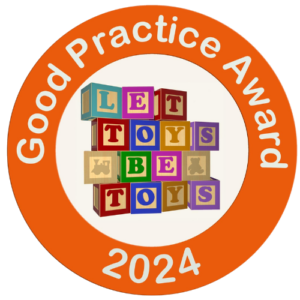
There is so much to learn about the beautiful rainbow. At the end of this blog you will find lots of rainbow fun facts all about these beauties. Firstly, we’re going to take a look at how you can create your very own rainbow. Not only that, but we’re also going to look at how you can make light bend (when you have a read through the fun facts you’ll discover why bending light is an important part of the formation of a rainbow).
How to make a rainbow
All you need is a garden hose, a sunny day and permission to head outside. You need to stand in a position where the sun is behind you. Next, you need to turn the hose on and put your thumb over the nozzle where the water comes out so that it comes out as a spray (or you might have one of those hoses where you can set it to the spray setting). Hold the hose out in front of you and spray the water out. You should start to see a rainbow forming. If this doesn’t work, you could try moving the hose up or down a bit. If it still isn’t working, you might need to wait until the sun is shining a bit more brightly as you need plenty of light for this experiment.
Watch light bend
As you’ll discover in the rainbow fun facts below, bending light is key to the formation of a rainbow. You can carry out your own experiment so that you can watch light bend. All you need is a table, a glass of water and a pencil.
Placed the glass of water on the table and put the pencil inside with part of it peeking out the top of the water. Firstly look at the pencil through the side of the glass. Then at the top of the glass. Then take the pencil back out of the water and look at it again. What difference did you notice? Did you notice that when you looked at the pencil through the side of the glass it looked bent? This happened because when light passes through the glass and water it hits your eye from different angles than it normally would and makes the pencil look bent.
Try also holding the pencil right up against the side of the glass that is nearest to you and then slowly move it to the other side of the glass. Can you notice any difference? The pencil should look bigger and bigger as it moves further away. This is because the more water there is between you and the pencil, the bigger the pencil will look!
Now let’s look at some fun facts about rainbows…
Rainbow fun facts
The rainbow is a multi-coloured arc appearing in the sky.
Rainbows are formed when light shines through water (e.g. like when the sun shines through the rain). This light is bent and reflected, like a reflection in a mirror, and this creates all of the colours that you see in a rainbow.
While rainbows normally appear from the rain, they can actually happen wherever light is being bent inside of water droplets (e.g. in mist, fog, spray, and dew).
Most of the time light looks white, but it is actually made up of seven colours. These are the colours that you see in the rainbow in the following order – red, orange, yellow, green, blue, indigo and violet (ROY G BIV is a great way to remember these colours and their order). Issac Newton was an English physicist and mathematician. He identified the 7 colours of the visible spectrum that together make up white light.
Sometimes we are lucky enough to see a double rainbow (and very rarely a third and fourth). A “double rainbow” is caused by the light reflecting twice inside the water droplets.
I hope you enjoyed this fun learning topic about rainbows.









Recent Comments